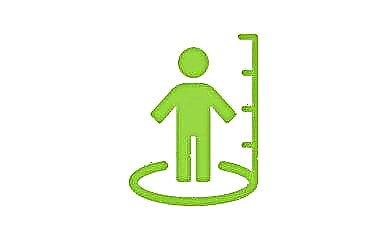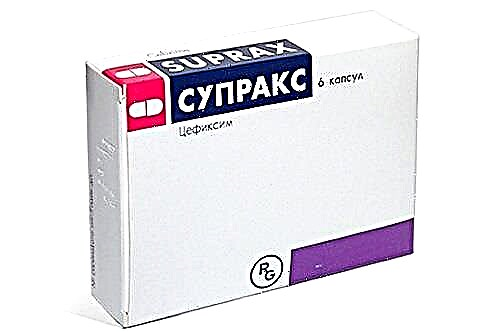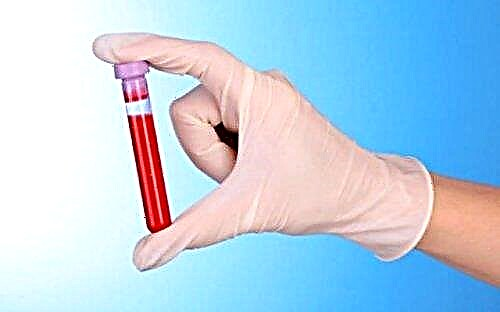When a child is sick, parents do not find a place for themselves, do not know how to alleviate the condition of the crumbs, what to do, how to help. Nausea is most often accompanied by vomiting, this condition occurs for various reasons. This could be food poisoning, stomach problems, or head injury. Before starting treatment, you should find out the reason for such a reaction of the body.

Boy in black and white
Vomiting mechanism
Vomiting is a physiological process in a child's body, which is a defensive reaction. The body thus gets rid of toxicity. Signals for vomiting come from the cerebral cortex, liver, stomach, and other organs. Partially digested or poorly digested pieces of food with a mixture of gastric juice or bile erupt through the mouth opening.
Vomiting attacks can be repeated. The more often they occur, the higher the degree of dehydration, because with the vomit the body loses a large amount of fluid. Often after 1-2 attacks, the condition is relieved, toxins are eliminated, the symptoms of nausea stop.
Important! For children under 2 years of age, dehydration occurs after 1-2 attacks. It can cause serious harm to children's health.
Why is the child often nauseous and intermittent
The child may vomit frequently and intermittently. This is associated with different types of problems. With frequent attacks, the baby is most likely poisoned. With periodic - stomach problems or neurological damage. The condition also happens with or without fever. This is an important symptom in determining the cause.

Mom and baby
Causes of vomiting and nausea in a child
Anything can be the cause of nausea and vomiting in a child. Frequent occurrences in children are:
- Helminthiasis. Children often come into contact with stray cats or dogs, do not always wash their hands and fruits thoroughly. Therefore, the penetration of helminthic invasions into the stomach happens quite often. The worms begin to grow inside the intestines and cause intermittent vomiting without fever. The child loses weight, becomes less active, refuses to eat, sometimes complains of a rash.
- Doorkeeper spasm. It happens in infants up to a year, since they have not yet fully formed it. Therefore, vomiting often occurs. Over time, children simply outgrow this problem.
- Bowel obstruction. Happens at different ages. Requires urgent surgical intervention. The child is sick for several days in a row, the attacks are periodic, there is a low temperature. Vomit may be with bile. Occurs when blockage with a ball of worms or movement of part of the intestine and blockage of patency.
- Foreign body entering the intestine. It often occurs in young children under 5 years of age. They eat objects out of great interest. The kid vomits periodically, he complains of abdominal pain, refuses to eat. At best, he himself can admit that he ate something. Vomit can be mixed with blood, as a foreign body scratches the esophagus.
- Rotovirus infection. Almost everyone has come across this virus. Frequent and simultaneous bouts of diarrhea and vomiting occur. The high temperature rises to 400. The child is weakened, drowsy, it is difficult for him to talk, he refuses to eat and active games. The disease lasts 3-5 days and requires medical attention.
- Dysbacteriosis. It happens after undergoing treatment with a course of antibiotics. Medicines affect not only pathogenic microorganisms, but also destroy beneficial microbes. Because of this, the functionality of the intestines is disrupted, diarrhea and vomiting occur.
- The emergence of acute gastritis, cholecystitis, gastroduodenitis, pancreatitis. It is accompanied by vomiting, nausea, severe abdominal pain. The baby is worried, breathing heavily, his temperature rises. The child is constantly nauseous. It is required to see a doctor.
- Traumatic brain injury. After a fall or hit on the head, the baby has a violation of the vestibular apparatus. He is dizzy, drowsy, occasional vomiting occurs, and appetite disappears.
- Food poisoning. It usually lasts about a day due to eating a poor-quality product or with an expired date. An attack of diarrhea, nausea, vomiting appears. After emptying the intestines, the condition is relieved.
- Diseases associated with metabolic disorders. With undetected diabetes mellitus, lactose intolerance, vomiting occurs. Such conditions are treated only after examination and clarification of the cause.
- Stressful state. It rarely happens, it happens in babies who are very worried. For example, for the first time we went to visit someone, parents' divorce and quarrels, the death of a loved one.
Important! If a child complains of nausea, then you should know what he ate before, what he was doing, what he played and under what circumstances. Re-creating the full picture will help you quickly understand the cause of the condition that has arisen.

The kid is being watched by doctors
What to do with vomiting and nausea is not recommended
Some inexperienced parents make the mistake of giving the child the wrong medication and making him eat. What not to do in such situations:
- force to eat;
- give sweet compotes and carbonated drinks to drink;
- offer candy;
- demand that the baby eat something from dairy products;
- insist on the child's activity;
- treat with little-known drugs;
- put the child on his stomach;
- bathe in a hot tub.
Any of the above actions are prohibited in relation to the baby. This will only worsen the condition. Moreover, for children under one year of age and older, the treatment tactics are different.
Ways to eliminate vomiting
Children under one year old are very fragile, it is easy to disrupt the functioning of their body. They are just beginning to taste everything around them, to receive certain knowledge, many of them through their mouths. Babies are constantly pulling various objects and toys into their mouths. Therefore, the risk of developing a rotavirus infection is high. What to do if a child under one year old is sick:
- first of all, you need to make sure that he lies on his side, since at this age children can choke on vomit;
- carry the baby in a column for a while, this prevents attacks;
- call a doctor at home for examination;
- measure the temperature;
- give the baby a drink of water;
- if vomiting is frequent, then give slightly salted water;
- if the doctor travels for a long time, then you can dilute a little smecta, but strictly according to the instructions.
A medical consultation will help to establish the correct nutrition for the period of illness, tell about contraindications and methods of treatment. Self-medication is dangerous for a child's life.

The girl has a stomach ache
When not to do without vomiting pills
If the child is constantly nauseated, then they give antiemetics. They are prescribed by your doctor, as some of them have a number of side effects. If the nausea has lasted for several days, the child complains of abdominal pain, the inability to eat normally, then they start taking pills.
Contraindications to taking medications
In some situations, for nausea and vomiting, the child is not allowed to take medicine. This occurs when the cause of the condition is not identified, there is an allergic reaction to the components of the drug. In such cases, the baby is taken to the hospital, examined, diagnosed and the right treatment selected.
Important! The dosage and the correct treatment regimen are selected by the doctor after the examination.
Food and drink
When a child complains of nausea, it indicates that he is sick with something. This condition is associated with loss of appetite, it is worth revising the diet for the duration of the illness. If the attacks are repeated and do not stop, then at this time it is recommended to drink slightly salted water or non-carbonated mineral water. Until he gets better, they do not allow him to eat. When the child is nauseous periodically, they give dishes from the list:
- infants continue to be fed with formula or breast milk;
- children under one year old continue to give complementary foods, but vegetable is better;
- adults are given viscous porridge;
- unsweetened tea, water;
- vegetable soups;
- boiled meat or low-fat fish.
They try to salt food as little as possible so as not to cause intestinal inflammation. Monitor the child's reaction to its use. If it gets worse, then they switch to more liquid food.
Important! It is forbidden to give children smoked meats, spices, sweets and other harmful food.

Girl covers her mouth with her hands
When urgent care is needed
In some cases, a child needs urgent medical attention if vomiting is associated with a serious illness and requires medical attention. The main symptoms are:
- the presence of blood in the vomit;
- severe abdominal pain;
- drowsiness;
- chills;
- heat;
- vomiting is thick and black;
- admixture of bile;
- dizziness;
- recent injury;
- the smell of acetone from the mouth;
- dry skin;
- loss of consciousness;
- frequent attacks in the form of fountains.
Such symptoms appear after a traumatic brain injury, the presence of inflammation in the internal organs, chemical poisoning, and the development of diabetes mellitus. Better to play it safe once again.
Important! If the vomiting has an uncharacteristic color and consistency, you should immediately call an ambulance.
Actions before the arrival of the doctor
Until the doctor arrives, parents help the child from nausea at home. These are simple procedures that will help the doctor quickly provide assistance and understand the problem:
- The child is laid on its side so that it does not choke on its own vomit. This is especially true for babies under 3 years old.
- Change into clean and breathable clothing to avoid sweating.
- They try to give the baby water to drink before the doctor arrives.
- They measure the temperature on their own.
Such actions will help the doctor to conduct an examination in comfort and prescribe treatment. The main thing is not to panic and prepare correctly.

Girl vomits
Recommendations for a speedy recovery
Vomiting stops sooner or later. There are some useful tips for a speedy recovery:
- Strictly follow the doctor's recommendations.
- Increase the child's drinking regime.
- Make your baby's diet more useful during treatment.
- Take all necessary medications.
- Temporarily restrict the activity of children.
- Do not give sweets and fruits.
Nausea and vomiting in a child looks frightening in the eyes of the parents. The most common cause of this disease is poisoning. Adults are obliged to monitor the freshness and quality of the products given to children. Their gastrointestinal tract is less developed, which is why rejection occurs more often. In addition to poisoning, babies vomit due to health problems, after head trauma and metabolic disorders.



